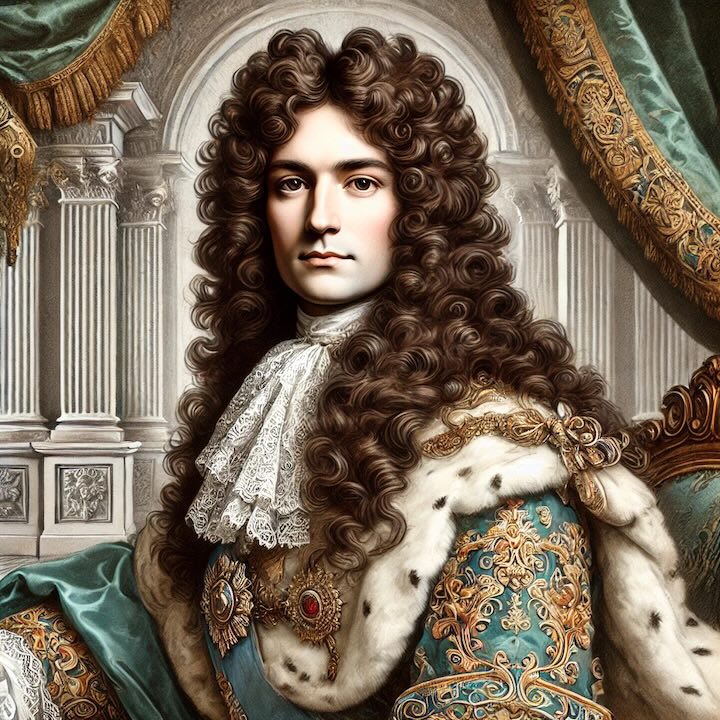Louis XIV (1638-1715)

Louis XIV became King of France at five, assuming full control at 22. He centralized power, declaring “I am the state.” His reign is marked by cultural brilliance, military expansion, and the persecution of Protestants. The costly War of the Spanish Succession left France financially weakened. After 72 years, Louis died in 1715, succeeded by his great-grandson, Louis XV.
Louis XIV, often referred to as the “Sun King,” ascended to the French throne at the tender age of five following the death of his father, King Louis XIII. As a child, Louis was not yet old enough to govern, so the responsibilities of managing the kingdom fell into the hands of his mother, Anne of Austria, and her close confidant, Cardinal Mazarin. Anne, along with Mazarin, acted as regents, handling the political affairs and guiding France through a turbulent period of internal and external strife. Mazarin, a skilled statesman, played a significant role in continuing the policies of his predecessor, Cardinal Richelieu, and in solidifying royal authority by suppressing noble uprisings such as the Fronde. These years laid the groundwork for the centralization of power in the monarchy that would come to define Louis XIV’s reign.
At the age of 22, Louis married Maria Theresa of Spain, a union designed to strengthen the fragile peace between the two historically rival nations. Soon after his marriage, Louis assumed full control of the French government, refusing to appoint a chief minister as his predecessors had done. He famously declared, “L’état, c’est moi” (I am the state), signaling his belief in absolute monarchy. From that point on, Louis played an active role in shaping French policies, concentrating power in his hands and diminishing the influence of the nobility. He managed everything from domestic affairs to foreign policy and held court at his magnificent palace in Versailles, a symbol of his centralized power.
Louis XIV’s reign is often remembered for the flourishing of arts and culture. His patronage of the arts led to what is now referred to as the “Golden Age” of French culture. Writers such as Racine and Molière, painters like Nicolas Poussin, and composers helped to elevate French culture to new heights. The development of ballet, as both an art form and a means of political control at court, also took root under his reign. His love for opulence was reflected in his lavish lifestyle and his creation of the grand palace of Versailles, which became the envy of monarchs across Europe.
However, Louis was also deeply interested in military matters. He spent much of his reign focused on restructuring and strengthening the French army, turning it into one of the most powerful forces in Europe. Louis also built a navy to support his military endeavors, and his reign saw France involved in numerous wars. These wars were often aimed at expanding French territory or maintaining a balance of power in Europe. The most significant of these conflicts was the War of the Spanish Succession, a long and costly conflict that left France in economic ruin.
One of the darker aspects of Louis XIV’s reign was his revocation of the Edict of Nantes in 1685, which had granted religious freedom to French Protestants (Huguenots). This led to their persecution and forced many to flee the country, weakening France both economically and socially. Louis died in 1715 after ruling for 72 years and was succeeded by his great-grandson, Louis XV.
 >
>